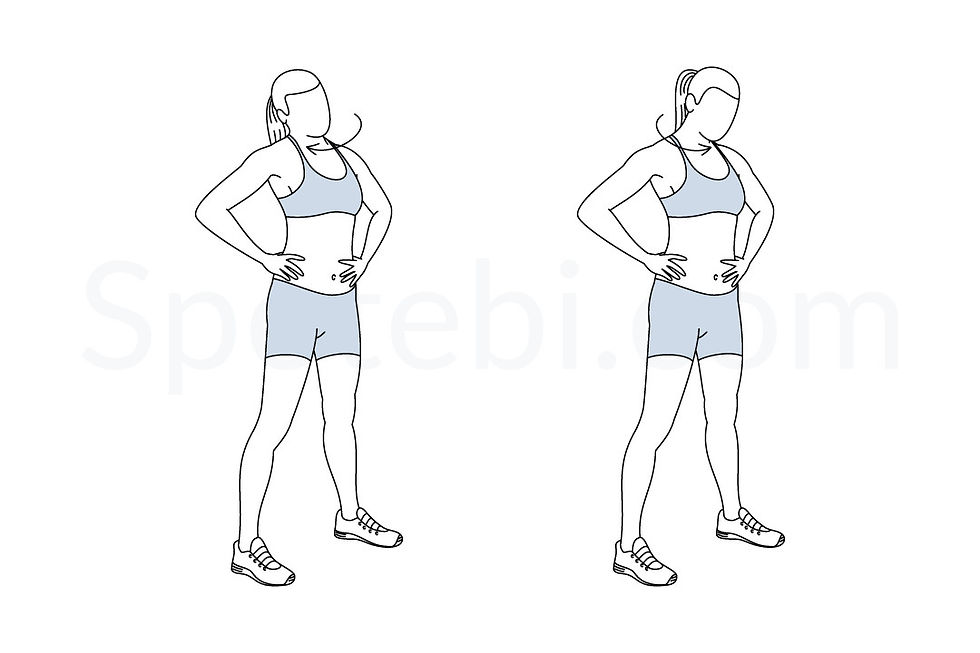Text Neck? ..... You Must Be Joking!
- Henry Fensome

- Jan 19, 2018
- 4 min read

I was listening to the radio in the car on my way home from work this week and heard the presenter talking about neck and back problems he was having, he referred to his injury as “Text Neck”. People always laugh when I mention the term “Text Neck” as they think I’m making it up. But, the condition defined as “Text Neck” is very much real….. But what is it?
What is Text Neck?
“Text Neck is an overuse syndrome or a repetitive stress injury to the neck caused by holding your head in a forward and downward position for extended periods of time. When holding your head in this position, excessive amounts of tension are created in the deep muscles of your neck and across the shoulders causing both acute and chronic neck pain. Chronic headaches have also been linked to this condition.
The increased prevalence of these pains is due to the increasing popularity and hours people spend on handheld devices such as smartphones, e-readers and tablets.

How Can Texting Cause You Pain?
Flexing the head forward to use a smartphone affects the spine directly. Tilting the head forward to 15 degrees places about 27 pounds of force on the neck. This increases to 40 pounds at 30 degrees, 49 pounds at 45 degrees and 60 pounds at 60 degrees. Damage caused by untreated text neck can be similar to occupational overuse syndrome or repetitive stress/strain injury.

Signs and Symptoms of “Text Neck”
The most common presentation of Text Neck is neck pain, stiffness and soreness. The main symptoms include:
Stiff neck: soreness and difficulty in moving the neck is usually present when trying to move the neck after long usages
Pain: can be localized to one spot or may be diffused over an area, usually lower part of the neck. Can be described as dull aching or can also be sharp or stabbing in extreme cases
Radiating pain: there can often be radiation of pain into the shoulders and arms.
Muscular weakness: shoulders muscles namely, trapezius, rhomboids and shoulder external rotators are often weak
Headache: sub-occipital muscle tightness can lead to tension type headaches.
In addition to these common symptoms there can also be:
Flattening of thoracic kyphosis
Early onset arthritis
Spinal degeneration
Disc compression
Muscle weakness
Loss of lung capacity
Who's at risk?

71% of adults own a smart phone.
In 2011 only 2% of all UK households had a tablet. Currently that stands at 54%.
According to OFCOM in average, mobile users spent nearly two hours online each day using a smartphone in March 2015 (1 hour and 54 minutes), compared to just over an hour spent online by laptop and PC users (1 hour and nine minutes).
It estimated that you can add a further 5,000 hours to that total for teenagers.
What Can I Do?
Prevention is the key when it comes to Text-Neck. Following suggestions should be kept in mind while using smartphones or other hand held devices:
Avoid excessive usage and take frequent breaks
Avoid prolonged static postures
Position the device such that it reduces stresses both on the head/neck and the upper extremities
Avoid high repetitions of movements such as prolonged typing or swiping
Avoid holding large or heavy devices in one hand for long duration
Rehabilitation is found to be very effective in treating the stress injury resulting from Text Neck. Rehabilitation from a Professional such as an Osteopath can help. An Osteopath will use techniques such as; soft tissue mobilization, active and passive stretches of tight muscles and progressing to muscle strengthening, posture retraining and home exercise program.
In acute cases, pain relief is the main goal. It can be achieved by
Regular neck movements: rotations and side bending
Stretches
Chin tuck exercises
Ice/heat packs
Massage
Try These Exercise to Help Relieve you Pain
Elbow Curls: From a seated or standing position, place your hands behind your head with your elbows pointing out to the sides. Press your elbows forward (left) until they touch in front of your face, then squeeze your shoulder blades together as you pull your elbows back until they're behind your ears. Do up to 10 reps.

Cat-Camel Stretch: Get down on all fours with your hands beneath your shoulders and your knees beneath your hips, neck in line with your spine. Slowly round your back by tightening your abs and tucking in your pelvis (above); hold for five seconds. Then allow your back to sag toward the floor as you lift your chest and head; hold for five seconds. Repeat the combination 10 times.

Lateral Neck Stretch: Look forward while keeping your head up. Slowly move your ear towards your shoulder while keeping your hands behind your back.

Diagonal Flexion Neck Stretch: Stand Upright and let your chin fall forward towards your chest. Then gently lean your head to one side. Relax your shoulders and keep your hands by your side.

Neck Rolls: Bend your head to put your chin on your chest. Roll your head to look towards your right shoulder, then roll back down and look towards the other shoulder. Repeat this motion for 5-10 reps.




Comments